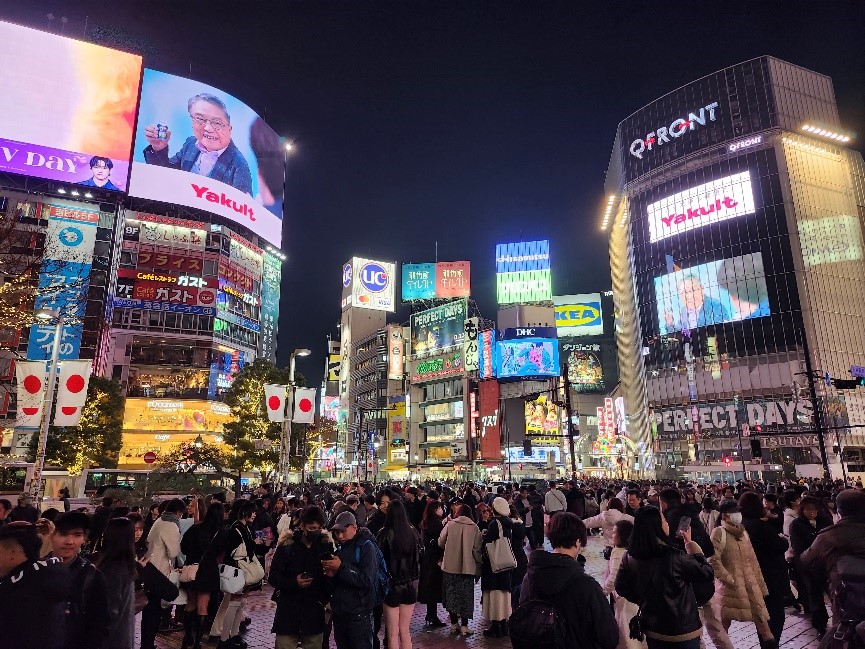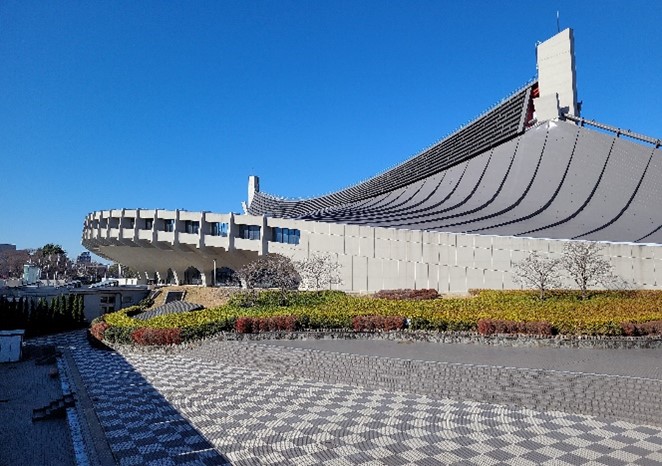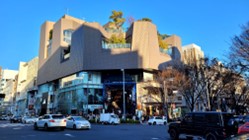Sheldon’s architectural pilgrimage. Shibuya and Omotesando

An important stop on your architectural pilgrimage in Japan should be to the busy and flashy district of Shibuya (), world-renowned for its famous pedestrian scramble crossing and hyper-capitalist youth culture and shopping that attracts millions of travellers every year and even intrigued celebrities like Gwen Stefani to appropriate aspects of some of the subcultures that call Shibuya home. An easy way to start this pilgrimage is to make your way to Shibuya Station on any of the multitude of train lines that merge at this messy and wonderful point. From here on, there is no destination or suggestion one can give to discover Shibuya as you just need to get lost in the crowds and head down every street. Shibuya is also a different place during the day as it is during the night, so it might be worth visiting a second time to experience it again.

Shibuya is often talked about like it is its own neighbourhood, but actually it is a ward (often referred to instead as its own “city”) made up of a bunch of smaller neighbourhoods with their own unique identities and frequented by different social groups and subcultures. Harajuku is one area right on the edge of Yoyogi Park and Meiji Jingū, made popular for its fashion and street food appealing to the young crowd (especially teenagers) easily found on the narrow and crowded Takeshita Street. Gwen Stefani must have enjoyed Harajuku because she sang about “Harajuku girls” and had Japanese back-up dancers during her “If I was a Rich Girl” and “What You Waiting For?” years. Harajuku can be reached by taking the Yamanote Line to JR Harajuku Station, currently undergoing reconstruction with a new, glass building replacing the historical wooden one, which luckily will be rebuilt in later phases.

Right beside Harajuku Station is Yoyogi National Stadium. Built between 1961 and 1964, it was designed by Kenzo Tange for the 1964 Tokyo Summer Olympics for the swimming and basketball competitions. It is characterized by its swooping concrete shell and somewhat spiralled and steep grey roof.
If you are a rich pilgrim or one who can at least appreciate the architecture of expensive stores, Omotesandō
 is a neighbourhood that cannot be missed. It was constructed in the early 20th Century as a boulevard leading up to the front of Meiji Jingū, an important shrine dedicated to Emperor Meiji and his wife, Empress Shōken. As mentioned in a previous post, a sandō is a route leading up to a shrine or temple pilgrims would take when visiting these religious sites. Pilgrims used to travel great distances on foot and would be weary that businesses like teahouses and inns were established. Over time, some of these routes became proper commercial streets. Omotesandō in Tokyo became a wide boulevard lined with zelkova trees where high fashion brands hired famous architects to design their flagship stores. The narrow side streets are also interesting places to find less expensive shops and bistros inside specially designed buildings. Omotesandō should be a pitstop for any architectural pilgrimage.
is a neighbourhood that cannot be missed. It was constructed in the early 20th Century as a boulevard leading up to the front of Meiji Jingū, an important shrine dedicated to Emperor Meiji and his wife, Empress Shōken. As mentioned in a previous post, a sandō is a route leading up to a shrine or temple pilgrims would take when visiting these religious sites. Pilgrims used to travel great distances on foot and would be weary that businesses like teahouses and inns were established. Over time, some of these routes became proper commercial streets. Omotesandō in Tokyo became a wide boulevard lined with zelkova trees where high fashion brands hired famous architects to design their flagship stores. The narrow side streets are also interesting places to find less expensive shops and bistros inside specially designed buildings. Omotesandō should be a pitstop for any architectural pilgrimage.